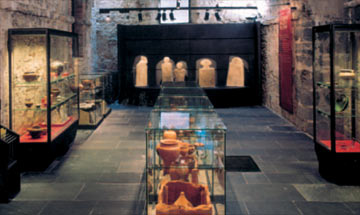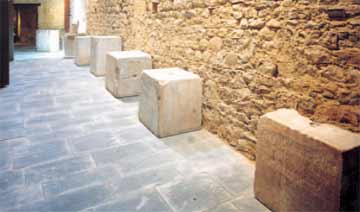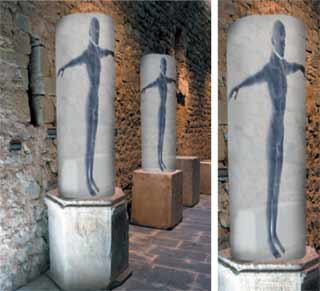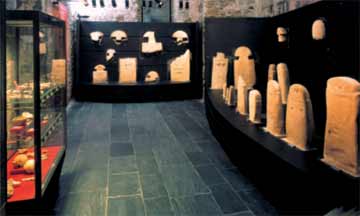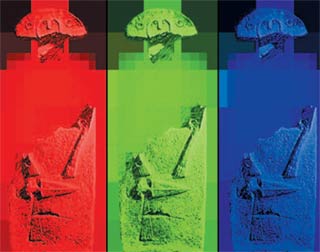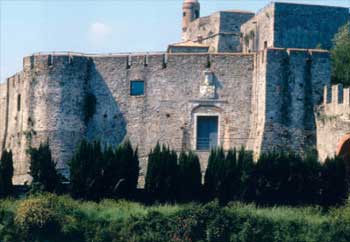
MUSEO ARCHEOLOGICO DEL CASTELLO
Via XXVII Marzo
tel. 0187/751142
![]() critical text by Francesca Cattoi
critical text by Francesca Cattoi
The Museo del Castello (Castle
Museum) in La Spezia has been elected for the second time the most suitable
place where the town's archaeological collections and the creative spirit
of three young local artists can meet. These artists express themselves
through modern technological tools and their multimedia functions, producing
works characterised both by vivid spontaneity and skilful control of the
technological means. Their works also show how the dialogue between generations
of men, though so distant the ones from the others, can be full of significant
and unexpected visual emotions.Simone Barbieri grounds his reflection
on the representation of contemporary armed conflicts on the painful penetration
of the Romans in Liguria during the second Iron Age. His photographic
sequences compare, also through an interesting chromatic contrast, war
perceived as a game with the real consequences it produces.Matteo Bertocchi
is inspired by the Roman archaeological finds. On the marble bases, once
used as pedestals for the statues dedicated to notables of the ancient
Luni, he places new characters, suggesting their original function. His
photographic installations search into corporeity and vitality rather
than into the social background of the human being, exploiting both classical
and futuristic imagery.Francesco Meniconi lays emphasis on the almost
abstract simplification used by the men of the Copper Age for their representations.
He highlights the evocative potentiality of the stelae-statues, re-interpreted
as modern icons, and presents their digitised image in a video-installation
that enlivens those ancient shapes with the colour and dynamism typical
of electronic technology.
